Breath control options in yoga
3There are many ways to control breath in our yoga practice. I put them into a comprehensive chart to remind you of all the options you have and to help you organize your thoughts. Every breathing strategy or technique fits on this chart somewhere. I hope that you will use it as a reference for your own breathing practice and for working with your students.
Breath control options in yoga
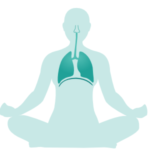 BREATH AWARENESS
BREATH AWARENESS
Breath awareness means paying attention to each individual breath without trying to change anything. You can notice the flow of breath, the expansion of the lungs, the movement of the rib cage and abdomen, sensations in the nose or throat, the movement of the diaphragm, etc.
EXAMPLES: Observing the breath without interference, noticing if you breathe through your nose or mouth, which part of the breath is longer, how the breath feels in the body, etc.
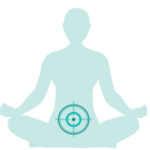
DIRECTING THE BREATH TO DIFFERENT PARTS OF THE BODY
We cannot literally direct the breath into different body parts; instead we move our awareness AS IF we were breathing into specific body areas. We cannot control the action of the lungs, since lungs do not have muscular tissue, but we can control the movement of the respiratory musculature.
EXAMPLES: “Breathe into your upper back” means “Intentionally widen your upper back when you breathe in.”
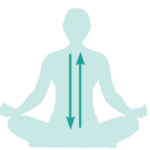
CONTROL OF THE BREATH FLOW
We can intentionally control the respiratory musculature to bring the sense of directionality to the flow of breath. For example, we can CHOOSE to expand the belly first and then the chest on the inhale, or we can CHOOSE to expand the chest first then the belly.
EXAMPLES:
Chest breathing: Intentionally expanding the rib cage on the inhale for energizing, uplifting effect.
Belly breathing: Intentionally expanding the belly on the inhale for grounding effect.
Chest-to-belly breathing: Expanding chest then belly on the inhale for more balancing effect.
“Radiating” breath: Expanding outward from the solar plexus on inhale and contracting the solar plexus area on exhale to create the sense of expansion from the center.
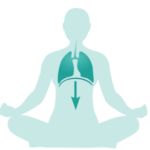
INCREASING BREATHING CAPACITY
We can gradually deepen our inhalation and lengthen our exhalation. This helps to improve the tonicity of the diaphragm, maintain the lung elasticity and lung compliance, maintain ribcage mobility and strength of the respiratory muscles that decline with age.
EXAMPLES: We can work toward breathing at the rate of about 6-second inhalation and 6-second exhalation first and then lengthen the breath from there.
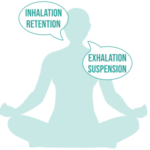 WORKING WITH BREATH RATIOS
WORKING WITH BREATH RATIOS
A breathing ratio reflects a relative relationship between four parts of the breath: Inhalation : Retention : Exhalation : Suspension. We can gradually lengthen one or more parts of the breath to increase our breathing capacity and achieve Brhmana (stimulating), Langhana (discharging) or Samana (equalizing) effect.
EXAMPLES: 8:4:8:4 ratio means “Inhale for 8 seconds, hold your breath for 4 seconds, exhale for 8 seconds, hold your breath out for 4 seconds.”
Inhalation + Retention longer than Exhalation + Suspension = the ratio will likely have Brhmana effect.
Inhalation + Retention shorter than Exhalation + Suspension = the ratio will likely have Langhana effect.
Inhalation + Retention same length as Exhalation + Suspension = the ratio will likely have Samana effect.
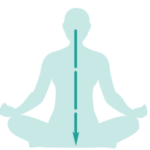 KRAMA (SEGMENTED) BREATHING
KRAMA (SEGMENTED) BREATHING
Krama breath involves breaking the inhalation or exhalation down into two or three parts for the purpose of lengthening the breath. This technique has a very pronounced energetic effect (Brhmana or Langhana).
EXAMPLES:
Krama Inhale: 3-part inhale with pauses in between, exhale is long and flowing (Brhmana effect).
Krama Exhale: 3-part exhale with pauses in between, inhale is long and flowing (Langhana effect).
 NOSTRIL BREATHING
NOSTRIL BREATHING
Nostril breathing means breathing through one nostril or the other depending on the effect you are after. Breathing in through the right nostril will have heating quality, breathing in through the left nostril will have cooling quality; breathing out through the nostril will sedate the corresponding channel. We can do this in a variety of patterns.
EXAMPLES:
Suryabhedana: Inhale through the right nostril, exhale through the left nostril (Heating effect).
Chandrabhedana: Inhale through the left nostril, exhale through the right nostril (Cooling effect).
Nadi Shodhana: Inhale through the left nostril, exhale through the right nostril; inhale through the right nostril, exhale through the left nostril (Balancing, focusing effect).
Viloma Ujjayi: Inhale through alternate nostrils, exhale using Ujjayi breath (Brhmana effect).
Anuloma Ujjayi: Inhale using Ujjayi breath, exhale through alternate nostrils (Langhana effect).
Pratiloma Ujjayi: Inhale using Ujjayi breath, exhale through the left nostril; inhale through the left nostril, exhale using Ujjayi breath. Inhale using Ujjayi breath, exhale through the right nostril; inhale through the right nostril, exhale using Ujjayi breath (Balancing, focusing effect).
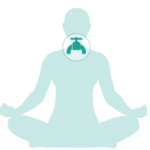 VALVED BREATHING
VALVED BREATHING
Valved breathing means breathing through a valve that we form in the throat (Ujjayi breath) or mouth (Shitali, Sitkari). This adds a vibrational quality to the breath (Ujjayi) and can be used for heating or cooling the system, as well as lengthening the breath.
EXAMPLES:
Ujjayi: Slightly constrict the opening of the throat to create some resistance to the passage of air. Breathe in and out through the nose with this slight restriction in the throat. Aim for a soft and soothing sound (useful for lengthening the breath and soothing the system).
Shitali: Start with your chin down, tongue curled and fully extended. On the inhale seep the air in, raising the chin to just beyond level. First fold the tongue back and drop the chin, then exhale through alternate nostrils (Soothing, cooling effect).
Sitkari: Start with your chin down, tip of the tongue on the back of the front teeth. On the inhale draw the air in between the tongue and the palate. Drop the head, fold the tongue back on itself, then exhale through alternate nostrils (Cooling, relaxing effect).
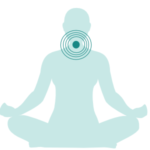
VOCAL BREATHING
Vocal breathing creates both sound and vibration. Humming has been shown to increase nitric oxide production in the nose, alleviate chronic inflammation and sinus infection and lead to parasympathetic (“rest-and-digest”) predominance. Working with sound affects the system energetically. We can change the volume and pitch of sound to produce a more soothing or more stimulating effect.
EXAMPLES:
Bhramari (“Bee breath”): Inhale smoothly, on the exhale make a low-pitch or medium-pitch humming sound for as long as it’s comfortable. (Calming, focusing effect, it helps to process mental chatter. You can use higher pitch or increase volume for a more stimulating effect. It works well to go from loud to quiet, or from high pitch to low pitch for more grounding effect.
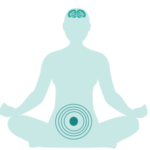 KRIYAS (PURIFICATION TECHNIQUES)
KRIYAS (PURIFICATION TECHNIQUES)
Breathing practices like Kapalbhati and Bhastrika involve rapid vigorous breaths, therefore they are considered cleansing practices rather than pranayama. Both techniques are facilitated by repeated lower abdominal contraction and are usually done in a seated position.
EXAMPLES:
Kapalbhati (“Skull shining”): Inhale rapidly, relaxing the abdomen; on the Exhale rapidly and vigorously contract the abdomen, forcing the air out through both nostrils.
Bhastrika (“Bellows breath”): Inhale rapidly through the left nostril, on the exhale vigorously contract the abdomen and force the air out through the left nostril. Continue, alternating sides.
Both practices have a heating effect, they can help to increase control over your abdominal musculature, to clear your sinuses, to potentially increase your metabolic rate and to facilitate a particular mental state.
When we begin to work with breath, it is easy to get lost in the sea of possibilities. There is such a buffet of different techniques, that it might be tempting to try a little bit of everything. And there is some value in experimentation, but the main point when it comes to working with breath is consistency. So it is best to start with the basics and get a firm grasp of those first. Then you can choose a ratio or technique that can be useful for your current situation and/or condition and stick with it for a while. Work with it for some time and make sure that the rest of your yoga practice supports it. (Read more about designing a breath-centered practice >) The full potential of a breathing technique with a lasting effect is usually revealed after weeks or months of working with it.
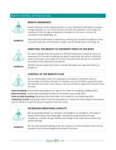
Sequence Wiz members can find Breath Control Options in Yoga pdf handout that contains all the information above in Forms and Handouts.
Learn more about Sequence Wiz membership >
[jetpack_subscription_form]


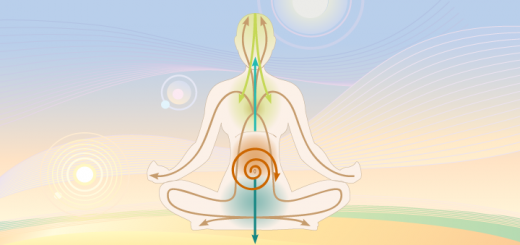

















This chart is amazing. So clear and concise.
Thank you
So helpful, thank you!
Very helpful. Thank you